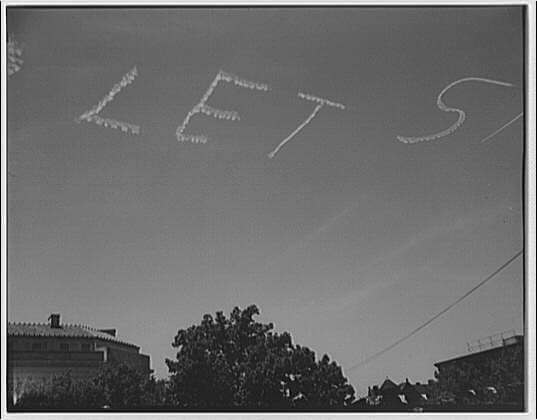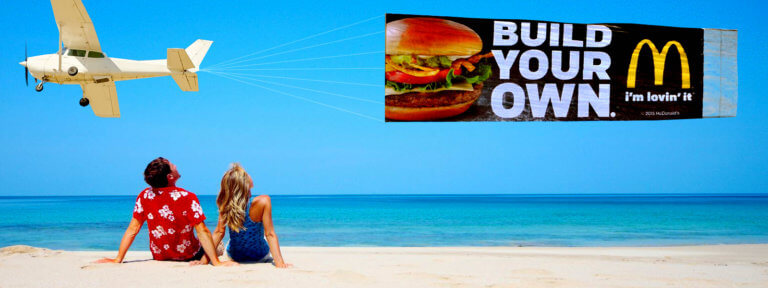
There is such an overload of advertising messages that makes it hard for businesses to create their own marketing message that’s able to break through the clutter successfully. Consumers today are bombarded with advertising messages more than ever before, however, they have become experts on how to skip and prevent getting such ads. So, we need new media to make us stand out from the crowd.
Aerial advertising is a form of advertising that uses brand logos on manned aircrafts or drones to display advertising media. The media can be static, such as a banner, or dynamic, such as an animated lit sign, skywriting, or audio. The impact of airplane aerial advertising can deliver messages to a large audience and make it stand out from the crowd.
This technique is attention-grabbing and is considered a great alternative to radio, television, and print media, especially in the summertime when people are out and about enjoying their time on the beach or at a football stadium. It is very engaging and effective because people look automatically up in the air when they hear an airplane’s sound, then they notice and remember the aerial message, catching the eyes of their audience with a very brief message or logo.
In a survey of 2,194 people at Miami Beach where aerial advertising is often deployed, 88% of participants were able to recall the passing of an aerial ad within 30 minutes; 79% were able to recall exactly what was being advertised, and 67% could recall at least half of the message. Statistically, this level of recall is much higher than other forms of marketing such as digital banner ads, TV commercials, or radio spots. Ads must be kept brief in order to ensure they can be read. Some aerial advertisement companies gain as much as a 20% response rate to their ads, almost four times the response rate of mail or email campaigns. Aerial ads are most effectively used where large groups of people are gathering outdoors such as beaches, concerts, sporting events, and popular tourist destinations.
When Was It First Used?
Skywriting dates back to the beginning of World War I, when Royal Flying Corps Major, John “Jack” Savage, developed a mechanism to pump an oily smokescreen out of an airplane’s exhaust pipe to help hide ships at sea. Some historians date the inception of such smoke back to 1910, used “as an alternate means of communication,”. To imagine a 1910 Bristol Boxkite carving smoky letters in the sky is laughable, however, as is the concept of communicating military messages quite so openly. After the war, Savage’s friend and fellow officer Cyril Turner modified a Royal Aircraft Factory S.E.5a fighter to make use of Savage’s concept for skywriting. He installed a smoke-oil tank and valve to inject the potion into the exhaust, extended the big Hispano-Suiza V8’s pipes all the way to the tail, asbestos-wrapped them to keep the gases hot, and split the rudder to allow the pipes to be joined into one big smoke outlet.
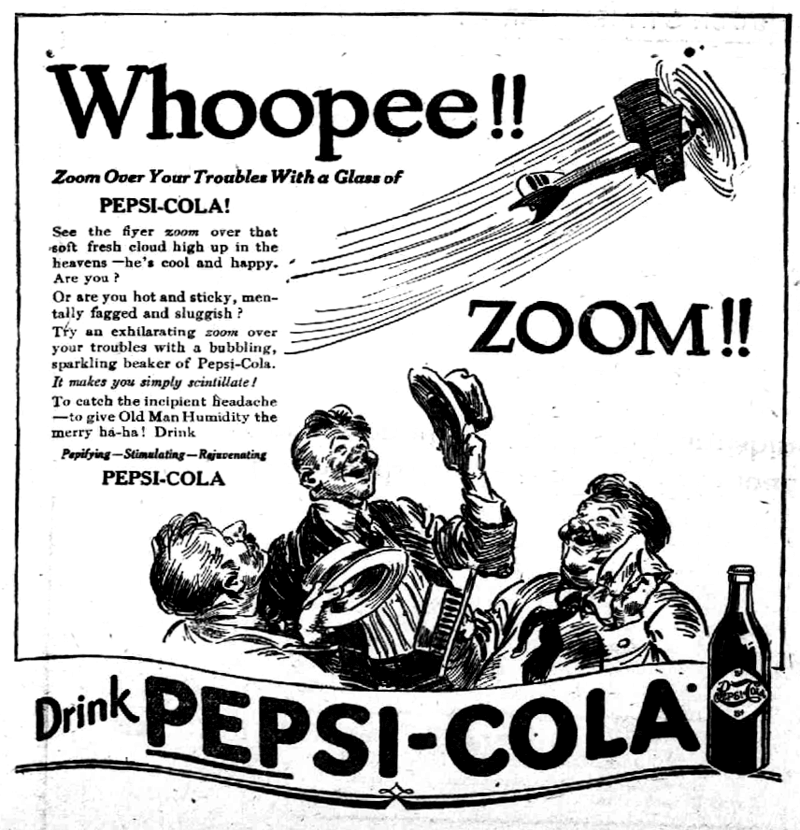
In 1931 the Pepsi-Cola Company (Pepsi’s name back in 1898) set forth to become the world’s foremost skywriting user. At the time, the company was a distant contender in the cutthroat cola wars. A 1940 New Yorker cartoon depicts an anti-aircraft gun crew in Coca-Cola shirts taking aim at a Pepsi skywriter. Pepsi hired skywriter Andy Stinis and his classic 1929 Travel Air D4D biplane to spread its message. Pepsi eventually owned a fleet of 14 skywriting airplanes to work all over the U.S., Mexico, and Central America.
Wide Range Of Cool Methods LED-Based
LED flying aerial night signs can take place anytime half an hour after sunset. It can fly anywhere to target and advertise directly over your site and active night crowd. It is a computer-controlled electronic sign displaying messages by flashing or scrolling through a text to make it dynamic.
Banner Towing
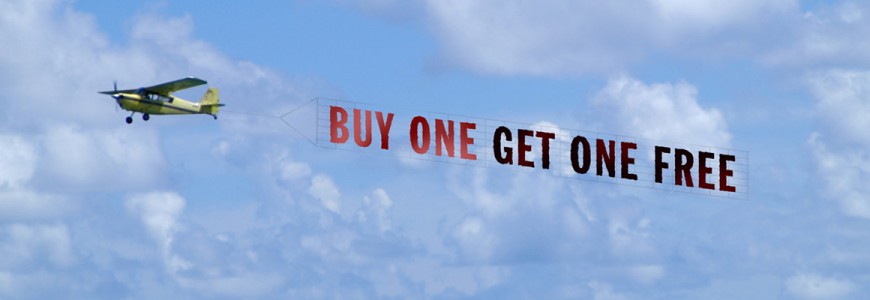
A banner is a logo and a message is towed or dragged behind an aircraft. Banners using standard letters consist of a series of either 5-foot-high or 7-foot-high letters connected together by joints designed for interchangeability. Standard letters have been the predominant form of banner towing for the past decade.
7-foot letters have the advantage of greater readability over a long distance but incur a large drag penalty on the towing aircraft. 5-foot letters, on the other hand, trade-off some readability for the ability of the towing aircraft to tow longer messages. A typical light aircraft is able to tow 25 7-foot letters or 35 5-foot letters.
The advantage of standard letters is their readability over a large distance and their flexibility. The letters being prefabricated means they can be made into messages with very short notice and can be changed easily after each flight.
Aerial Billboards
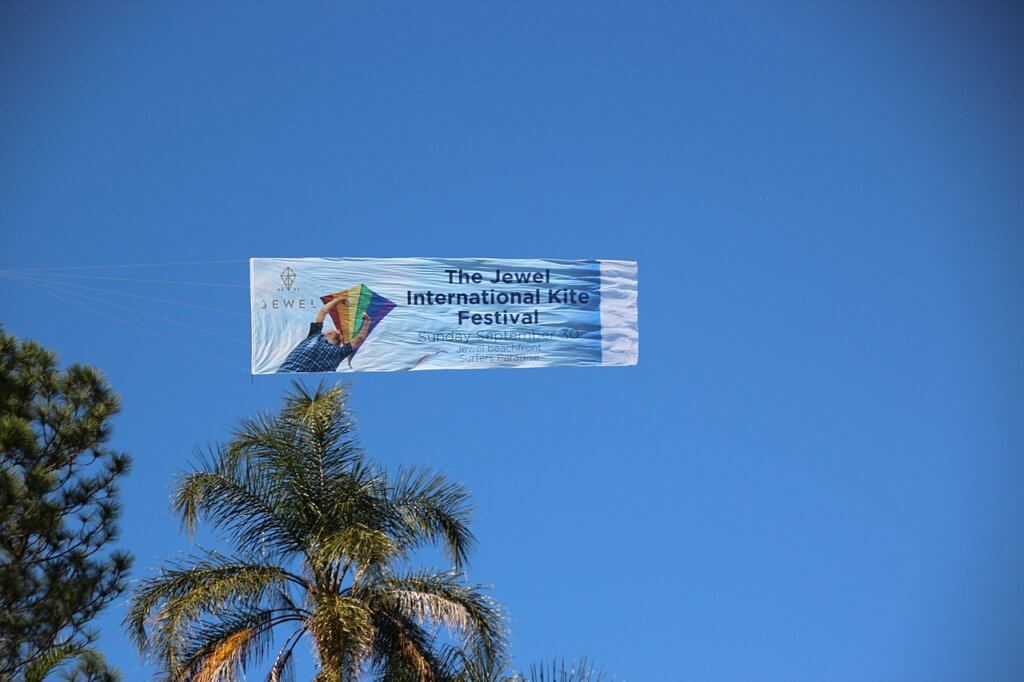
They usually consist of a large area of nylon cloth and are similar in weight to a spinnaker on a sailing boat. This blank canvas allows vivid pictures to be digitally printed and towed either behind an aircraft or below a helicopter. Helicopter billboards tend to be square in shape to prevent the top corner from sagging and becoming unreadable. Aircraft-towed billboards tend to be rectangular; usually 1 high to 3 long but sizes of 1 high to 4 long are becoming the norm.
The main advantage of aerial billboards is their visual impact. When banner towing using helicopters, they are much better suited for that use than standard letters are. The disadvantages of aerial billboards are that once painted or printed, they cannot be changed as quickly or easily as standard letters. Additionally, they take considerably longer to produce than standard letters.
Logo Banners
This form of banner-towing combines aerial billboards with standard letters to produce a banner that incorporates both types, bringing the “blank canvas” of aerial billboards together with the flexibility of standard letters. Commonly, an intermediate-sized area of nylon cloth is placed at the front of a banner which is then followed by standard letters. This technique is most often used to advertise a brand, but can also be used as a marriage proposal or party invitation.
Flogos

Flogos (“floating“ and “logos“) are customizable motifs made out of a stable mass of lighter-than-air soap-based bubbles formed into a specific shape. They are a type of foam balloon suitable for both outdoor and indoor use, and float in the air once released. They are produced by specialized mobile machines which first combine a patented foam fluid with water and helium to make the foam. The generated foam then gets pressed through a stencil which will determine its individual shape.
Sky-writing
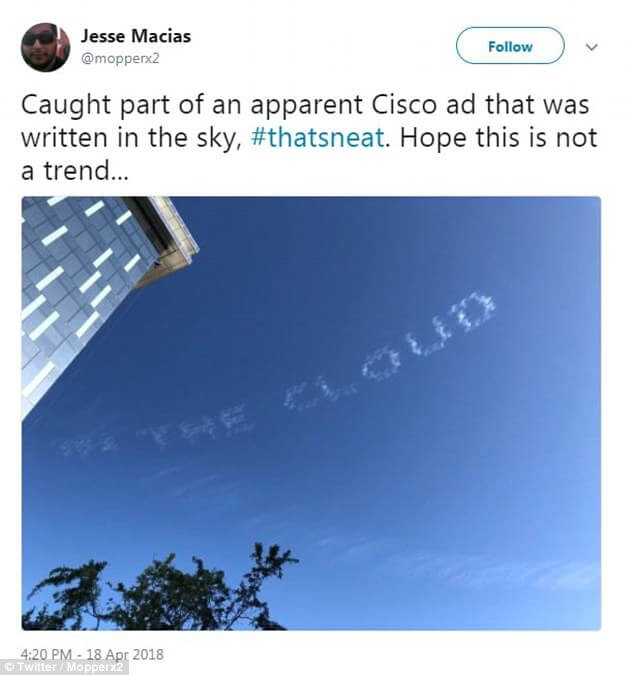
Sky-writing by fixed-wing aircraft, combined with the use of a vapor projector, remains very popular with major advertisers. It is most effective for brand awareness with short, dramatic messages and occasionally for “spectaculars”, such as marriage proposals. The practice of sky-writing is known to be one of the safest forms of flying, as it is only done in clear skies with smooth air (winds can be strong but smooth) and usually within controlled airspace, where radar separation is provided between planes.
The New Addition to the collection: Drones
Coachella planners worked with Intel to integrate the drone light show into the festival schedule. A crowd of more than 100,000 Coachella concertgoers saw history in the making when 300 Intel Shooting Star drones colored the night sky. The dancing drones took the shape of a Ferris wheel, then a rotating windmill, palm trees, and other colorful 3D animated objects. Intel designed the drones, animation, and music. And worked with festival director Bill Fold and Golden Voice to prepare for the two weekends of Coachella. The new technology demonstration at Coachella was historic because it was the largest audience to witness a live performance of the Intel Drone Light Show so far.
In Brief
Aerial ads allow businesses to be creative and stand out from the crowd. Just the sound of an airplane is enough to make audiences turn their heads toward the sky and grab their attention. When your audience is enjoying watching your ad, they are more likely to get their phones out of their pockets to take pictures and share them on social media, which will eventually create buzz for your brand. Moreover, advertisers can easily target their audience by flying it over sporting events, music festivals, beaches, parades, and busy commuter areas.


